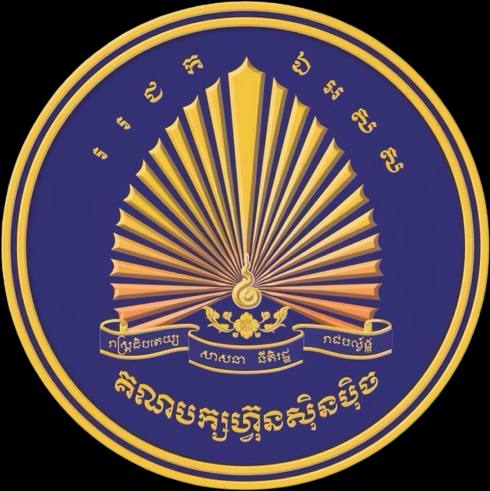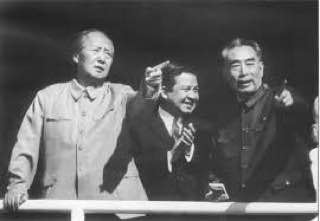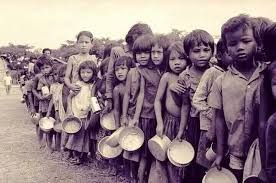What is Buddhist socialism, has it ever been attempted, where does it stand today and what impact of any did it have on Cambodia?
Officially Buddhist Socialism was the guiding principle of Cambodia during the 1960’s under Sihanouk. Quite how left-wing it was is up for debate, but it did at least partly help keep Cambodia aligned and safe from the growing leftist block of the region.
Table of Contents
Religious Socialism and Communism
Since the dawn of socialistic thought there have been religious variations on the thoughts of Marx, Engels, Lenin ands beyond. This despite the fact that Marxism at least tends to be of the atheist curve. Although if one actually reads the teachings of Christ, Christian Socialism actually makes some sense.
Most famous among these have been Christian Communism, with a Priest being a founding member of the ELN of Cambodia and of course Arab Socialism. The later her has governed much of the MIddle-East while trying to fuse Islam and left-wing thought.
Another arguable example here is that of Juche in North Korea, which many feel is strongly influenced by Confucianism.
What is Buddhist Socialism?
Buddhist Socialism therefore exists within this realm of religious socialism where stands of both are married together.
Technically at least these are two beliefs that should work well together, with a core tenet of Buddhism being to mend suffering. Sadly this, much like western views on the religion ignores many of its religious and spiritual aspects, as well as the overt obsession with money.
Most famous among Buddhist communists is perhaps the Dalai Lama, whom many do not realize was not only an avid socialist, but also an extremely keen supporter and student of Chairman Mai.
He stated the following “Of all the modern economic theories, the economic system of Marxism is founded on moral principles, while capitalism is concerned only with gain and profitability. (…) The failure of the regime in the former Soviet Union was, for me, not the failure of Marxism but the failure of totalitarianism. For this reason I still think of myself as half-Marxist, half-Buddhist”.
Buddhist Socialism in Cambodia
How did Buddhist Socialism work in Cambodia and indeed was Sihanouk a socialist? In answer to the first part of the question Sihanouk kept key industries under state control and kept a firm grip on power within the country. He also allowed communist within his government. The main “Buddhist Socialist” part though was largely enforcing charity from the Ruch to the poor.
Whether Sihanouk was himself a socialist, the answer iOS most probably no. We know that he looked up to people such as Chairman Mao and was deep friends with President Kim-Il-Sung. The reality though is that while he obviously wanted the best for his country, it was with him as leader in a palace, with s strong supportive private sector. Some have even opined that it was because of this tight-rope middle ground that he lost the support o the USA and drove those of the left to the Khmer Rouge.
Sangkum and Buddhist Socialism
In 1955 Sihanouk stepped down as King in favor of his father so that he could politically lead Cambodia. He did through the initial political party that he formed, known as Sangkum. This was described as a “movement” rather than a party. Realistically though it was much more than a movement and was instead a political “big tent” vehicle to keep Sihanouk in power.
Officially at least the ruling ideology, which would be adapted and change many times was Popular Socialist Community. What though exactly did this mean? The left-wing aspects of this were that many communists, including future Khmer Rouge leaders were allowed in government, appear outwardly leftist and appear as an anti-imperialist national leader. This to some extents succeeded with the question of whether to support Sihanouk, or not being key to the rift that would cause the formation of the Workers Party of Kampuchea.
And while Sihanouk would coin phrases like Royal-Buddhist Socialism and Khmer Socialism, the main ethos seemed to be placating the left, while keeping his palace.
The Khmer Rouge and Buddhist Socialism
While the Khmer Rouge were verdantly anti-religion they were still overtly obsessed with Khmer nationalism and history. Some members of the Khmer Rouge such as Tou Sanmouth and even Ta Mok were even former monks.
Democratic Kampuchea though would be officially at least atheist, with many monks and those of other religions being extremely heavily persecuted. Sadly it was perhaps their hatred of religion that influenced much of the worst actions of the group during this time
Buddhist Socialism and the Peoples Republic of Kampuchea
While the Peoples Republic of Kampuchea never called itself Buddhist Socialist, people were again allowed to not only practice religious freedom, but its rituals would again become part of Khmer life.
This was in stark contrast to not just other communist states in Europe, but also Vietnam and Laos. During the 1980’s Cambodian was even said by the Soviet Union to have “achieved socialism”. This in some ways perhaps makes it the best real example of Buddhist Socialism, or Buddhist Communism.
Buddhist Socialism in other states
The biggest state to practice with socialism and Buddhism was Burma under the guise the of the Burmese Way to Socialism. Said ideology was to install socialism, but under the auspices of “the Burmese situation”, which under the rule of the Bamar Buddhist majority meant religion too.
This ideology was never officially called Buddhist socialism, but it os known that leader Ne Win was affected by not just Buddhism, but also mysticism. This led to home trying to make the national currency the Kyat dividable by 9. This led to his and the regimes eventual fall from grace. Overall though socialism in Myanmar was seen as a failure on par almost with the Khmer Rouge.
One might also argue that Buddhist Socialism has also existed to some degree in Tibet. And while this might be controversial to some, there is no doubt that the Chinese Communist Party not only outlawed serfdom, but have drastically improved the standard of loving within Tiber. And this has been achieved by still giving the region a huge degree of both religious and political autonomy, whether it amounts to Buddhist Socialism is of course up for debate.




